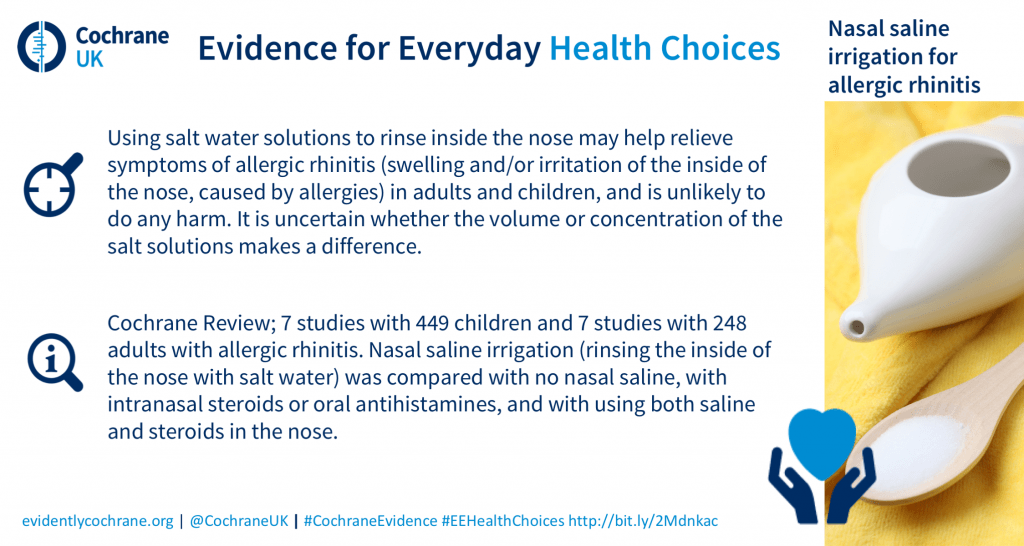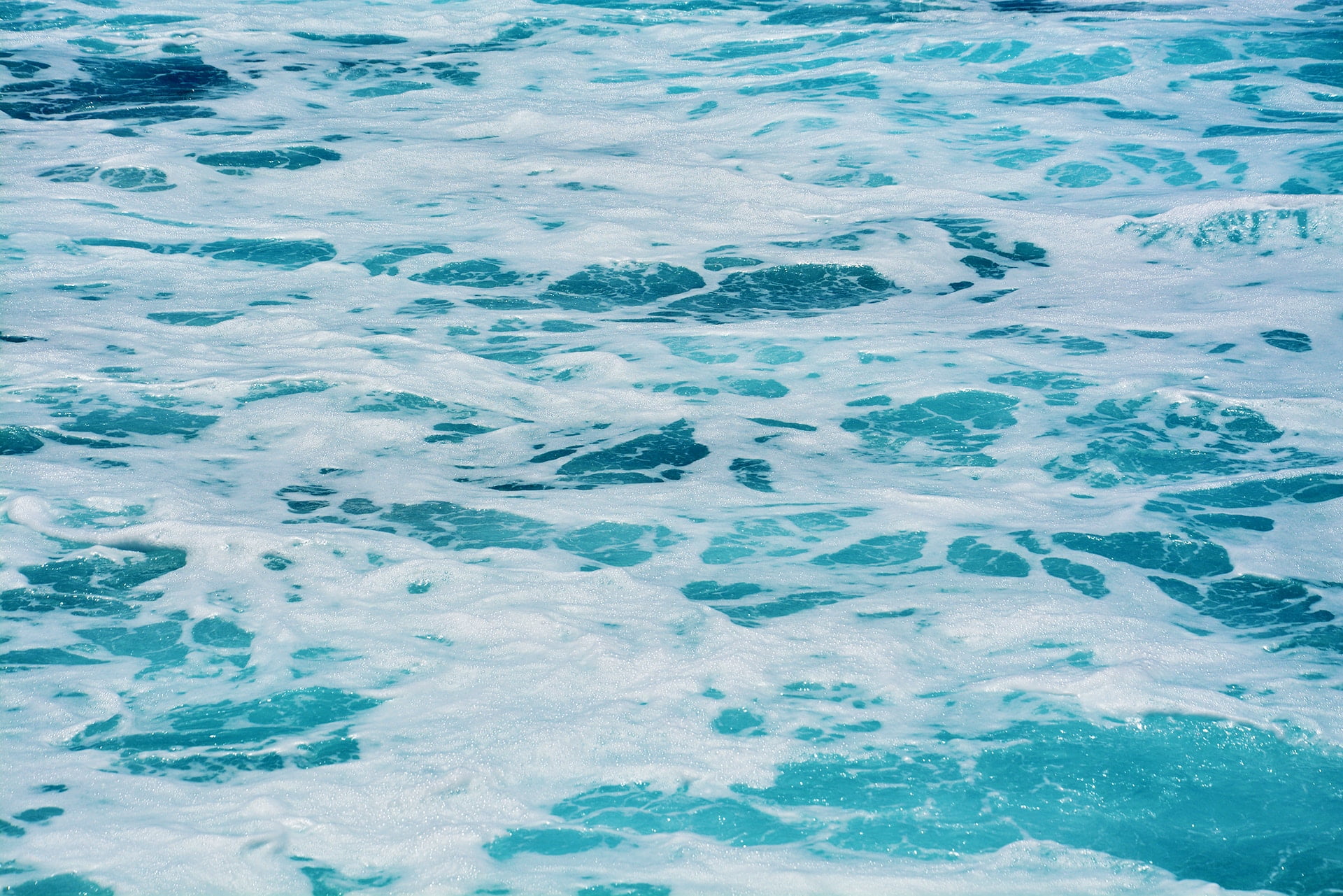Martin Burton, Ear, Nose and Throat doctor, writes about the latest evidence on nasal saline irrigation for allergic rhinitis (caused by hay fever or year-round allergies to things like house-dust mites).
Imagine you are sitting on the beach, on silver sand, admiring the aquamarine water of the sea as it gently laps the shore. Being an inquisitive health-conscious kind of person, you may (just may) find yourself wondering: what are the health benefits of seawater? Google this, and you will be directed to an article from SurferToday with a long list, that includes strengthening the immune system and slowing down the development of rheumatism. Is it all true? Well some of these claims I take with – frankly – a pinch of salt. Sorry.
Salty water: cheap, safe and widely available
But salty water (saline) does have some demonstrated health benefits and a recent Cochrane Review on the benefits of nasal saline in allergic rhinitis shows that. Allergic rhinitis can be seasonal (hay fever) or perennial (year-round allergies to things like house-dust mites); the symptoms can make people miserable. Many patients use steroid nasal sprays to help with their symptoms. Although the use of these is widespread, and the chance of having unpleasant side-effects is very low, many people would like to know if there is something a bit more natural that they can use, either instead of the steroids or in addition to them.

In both adults and children using saline reduces the severity of patients’ symptoms, with no reported unpleasant side effects. At least this is the case for the first three months; we don’t know what happens after that. And we also don’t know which way of using the saline, or which strength of solution, is best.
How do you get it in (and out) of the nose?
So, salty water is cheap, safe and widely available. But how do you get it in (and out) of the nose? There are a variety of methods. The ‘cheap and cheerful’ one is to make up your own solution of salty water, put some in your cupped hand, and sniff or snort it up your nose (one side or both) and then spit the solution out of your mouth. All you need for this is a source of water that has been boiled and then cooled to room temperature, and some common table salt costing almost nothing.
Alternative methods
There are alternatives that some people find more convenient. You can buy saline in an aerosol canister. This is marketed as sterilised sea water. The canister produces a fine mist that you can put up your nose as often as you wish. There is a definite ‘convenience’ factor here; the canister can be easily carried in a bag and there is very little ‘mess’. The volume of saline that goes up the nose with each squirt is small.
Another popular method involves putting the saline in a plastic bottle or other container, and – via an attached nozzle – squirt anything up to a 100ml+ into one nostril. This then either flows out of the other nostril (if you are tipping your head down) or goes into the back of the mouth to be spat out. Various manufacturers sell such devices along with sachets of salt (often not just plain sodium chloride, but other mineral salts too). One device that has attracted attention is called a “neti pot”. It looks something like a small tea-pot. You fill it with water, add salt, tip your head to the side, and put the spout in one nostril. ‘Pour the tea’ – tip up the pot – and the water flows into one nostril and out the other.
Using salty water and steroid nasal spray together
One last thought about putting salty water up your nose. If you also use a steroid nasal spray, don’t put the saline up your nose immediately after you’ve sprayed the steroid in; you may flush it away before it has done anything.
It is always good to find simple, ‘natural’ remedies that people can try without incurring great expense, or running the risks of serious side effects.
Salty water sprays and douches seem to be in this category. My guess is that swimming in the sea twice a day would probably work just as well. I wonder if surfers suffer less from hay fever than the rest of us?
Join in the conversation on Twitter with @CochraneUK, @CochraneENT and @martinjburton or leave a comment on the blog.
References can be found here.
A plain language summary of this Cochrane ReviewCochrane Reviews are systematic reviews. In systematic reviews we search for and summarize studies that answer a specific research question (e.g. is paracetamol effective and safe for treating back pain?). The studies are identified, assessed, and summarized by using a systematic and predefined approach. They inform recommendations for healthcare and research. can be found here.




[…] mentioned to you in today’s article the benefits andHarmful effects of sea water for allergiesWe also mentioned to you the mineral components of sea water and their importance for blood […]